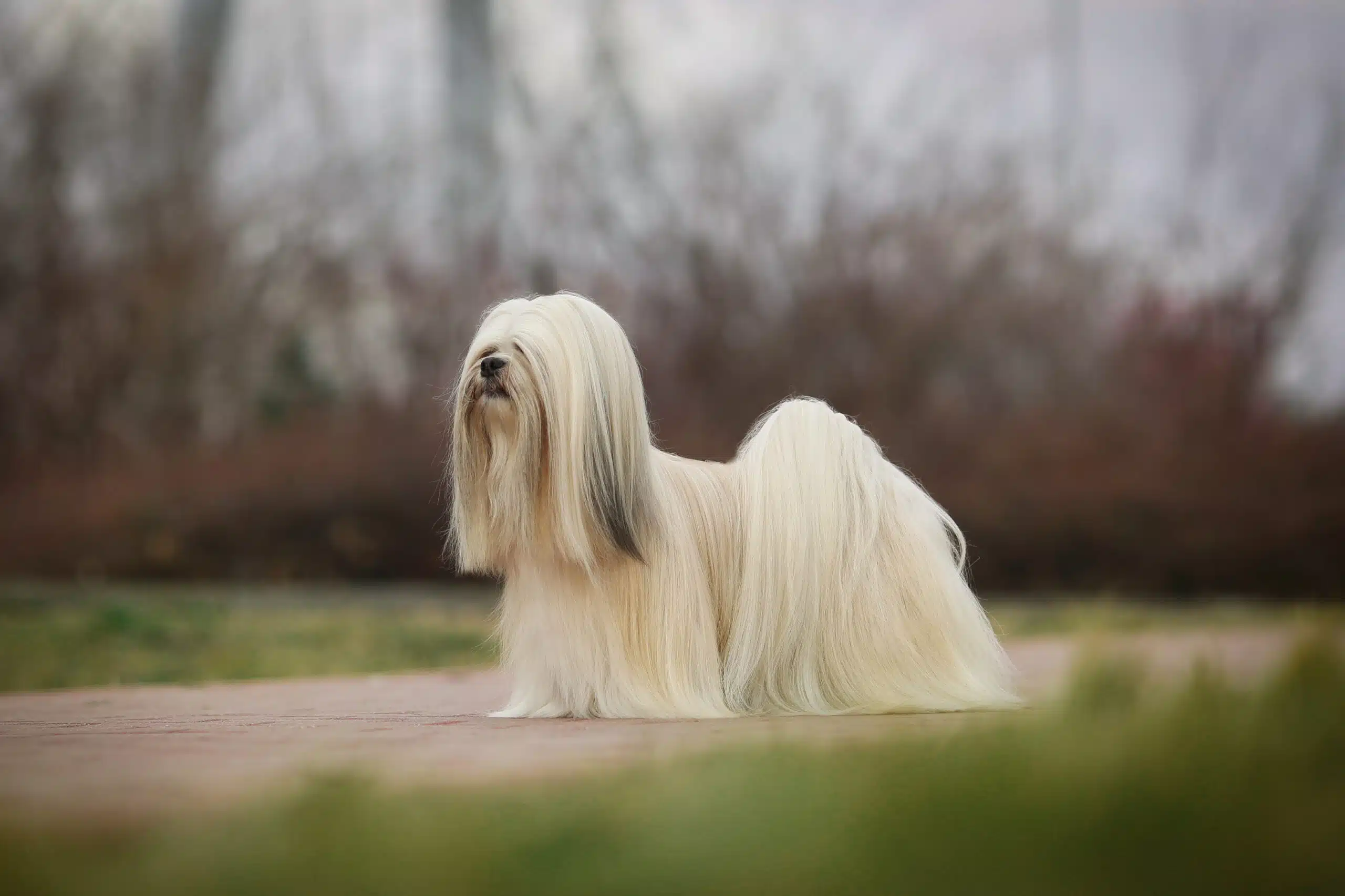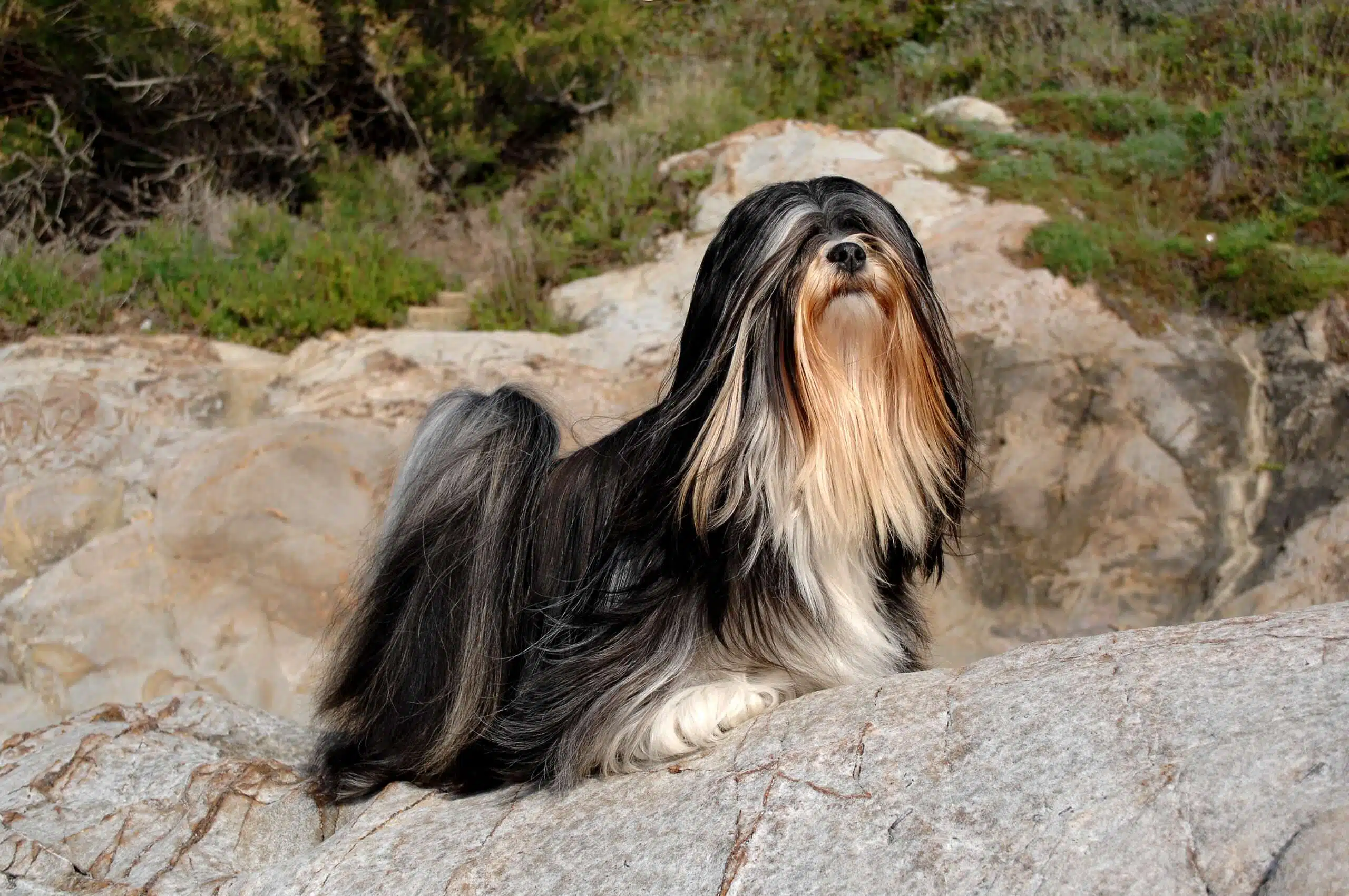Lhasa Apso

Majestic yet mischievous, the Apso of his native Tibet holds a dignified presence. He is innately alert and suspicious, making him an ideal watchdog to guard against potential threats. His long flowing coat requires extensive grooming in order to maintain its beauty. The Lhasa Apso embodies strength and manipulation; all wrapped up in one unique package!
The Lhasa Apso owes its name to the historical purpose of this breed, which was that of a “barking lion sentinel dog” for Buddhist monks. These dogs are not fearful in nature and are rather cautious and thoughtful creatures who like to analyze people and situations before they accept them. With an average activity level and size adaptable to all homes (from apartments to mansions), the Lhasa Apso is an ideal pet for anyone!
The formidable Lhasa Apso was initially bred as a monastery watchdog in Tibet and still maintains this sense of diligence. Although loyal to their family, these canines exhibit wariness around strangers – making them an excellent deterrent against any unwelcome visitors! Furthermore, they are blessed with enough independence that they don’t require constant attention; yet simultaneously remain affectionate towards those closest to them.
The Lhasa is a great family dog that needs the same level of activity as their owners. Even though exercise is beneficial, make sure not to overdo it and give him short walks regularly so he can explore his environment. Additionally, ensure your children are old enough to treat him with care since he won’t put up with having his tail, ears or hair pulled around. Including a Lhasa into your home can be an incredibly rewarding experience for all involved!
Lhasas aren’t usually motivated by the desire to please their owners, as they are quite independent and headstrong. The key to successful training is patience, consistency, firmness and positive reinforcement techniques. With these in mind, keep your Lhasa’s sessions short but fun; otherwise, they can become easily bored with the process.
Despite their small size, Lhasas are more than capable of competing in agility, rally, and obedience trials. In fact, one Lhasa has even earned a Utility Dog title! If your pup seems to thrive on the attention and applause that come with competition sports like these – why not give it a try? Plus for those particularly outgoing personalities amongst us; therapy dog certification is an ideal way to use all that loving energy as they go about bringing joy to hospital patients or residents of nursing homes.
If low-maintenance grooming is what you’re after, then the Lhasa Apso isn’t your ideal canine companion. The beautiful coat of this show ring regular requires extensive brushing and combing every two days to maintain its luster. For a pet, clipping their hair short can reduce some of that upkeep effort but still necessitates professional grooming on occasion; neglecting it becomes an uncomfortable tangle as well as developing skin infections risk. Regular hygiene is essential for a Lhasa’s overall wellbeing. A bath should be given every two to three weeks, while his nails must stay trimmed and ears cleaned on a weekly basis (or as needed). Additionally, brushing your pet’s teeth should not be overlooked!
Lhasas boast a longer growth cycle for their coats compared to dogs with the common “double coat.” This can result in less shedding, which translates into fewer allergens and potential allergic reactions. Still, Lhasas do produce dander so be cautious of any breeders who claim that their pups are ‘allergy-free.’
- Group AKC Non Sporting
- Origin Tibet
- Size Smallest
- Weight 12 to 15 pounds
- Coat Length Long
- Coat Type Silky
- Colors Black,Brown,Red,White,Yellow
- Other Names Lhasa, Lion Dog
- Temperament Alert,Assertive,Devoted,Friendly,Intelligent,Lively,Obedient,Playful,Spirited,Steady





